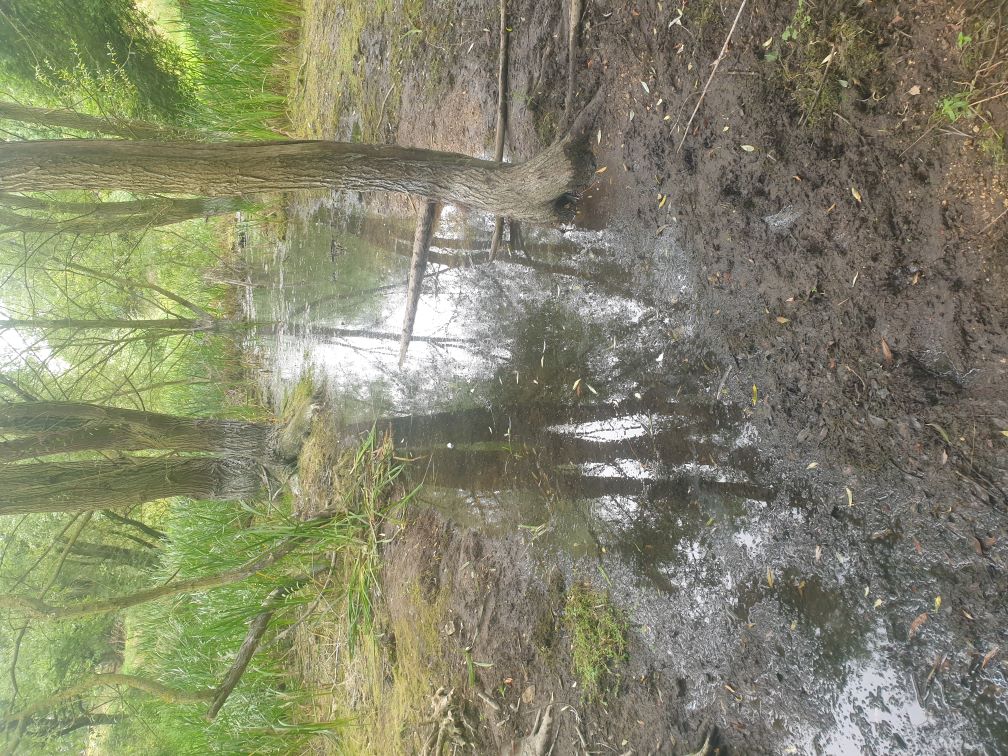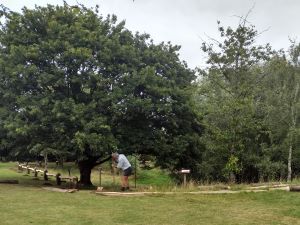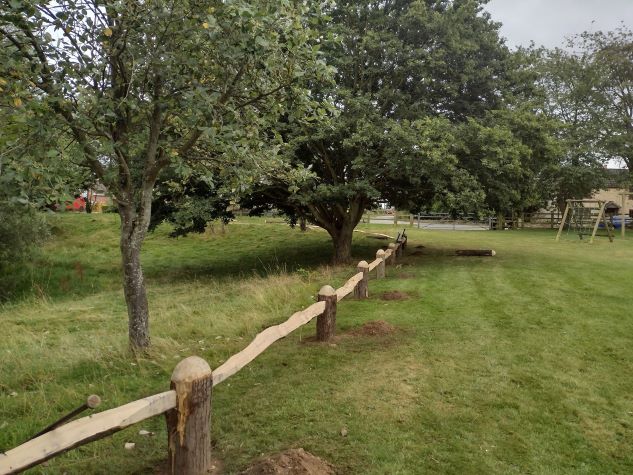Progress update August 2024

Over the weekend craftsman will be erecting a Chestnut cleaved knee-high fence in East End Park to segment the children’s play area from the pond. The main purpose is to prevent pre-school age children from running directly into the pond from the play area.
Cleft sweet chestnut is being used because it offers a very attractive rustic appearance and has a high tannin content protecting the wood from rot. Feel free to pop along and see this ancient craft being worked.
If you go down into the pond area, you’ll also see hundreds of newt tadpoles in the remaining pools (but please try not to disturb them)



